November 20, 2024 · 9 min read
Building Better University-Industry Partnerships with Centralized Meetings

Shaimaa Badawi

University-industry partnerships are more than just collaborations; they’re the driving force behind innovative breakthroughs and economic growth. Yet, navigating these relationships isn’t without challenges. This article explores how centralized meetings serve as a powerful tool to overcome obstacles, align goals, and ensure sustainable partnerships.
Why are university-industry partnerships essential for innovation and economic growth?
University-industry partnerships serve as a critical bridge between academic research and practical application, driving innovation and economic growth. These collaborations combine the expertise and resources of academia with the market-oriented approach of industry, creating a synergy that benefits both parties and society as a whole.
Universities contribute cutting-edge research, talent pipelines, and access to specialized facilities, while industries provide funding, real-world challenges, and opportunities for commercialization. This dynamic enables the rapid translation of academic discoveries into market-ready innovations, which can stimulate regional economies, enhance competitiveness, and address societal challenges.
For example, partnerships often lead to the development of new technologies, products, and services that create jobs and foster entrepreneurship. Additionally, these collaborations contribute to workforce development by aligning academic training with industry needs, ensuring graduates are equipped with the skills demanded by modern industries.
In a globalized economy, where innovation cycles are shorter and competition is intense, university-industry partnerships are pivotal in maintaining economic resilience and advancing technological frontiers.
What challenges hinder effective collaboration between universities and industries?
University-industry collaborations are often hindered by a range of challenges that stem from differences in organizational culture, priorities, and processes. Addressing these obstacles is crucial to unlocking the full potential of these partnerships.
- Cultural differences: Academic institutions prioritize knowledge generation and long-term research, while industries often focus on immediate, market-driven outcomes. This divergence can lead to conflicting objectives and expectations.
- Intellectual property (IP) issues: Disagreements over ownership and commercialization rights of research outcomes frequently arise, causing delays and mistrust in partnerships.
- Communication gaps: Misalignment in communication styles and a lack of shared terminology can result in misunderstandings, slowing progress and collaboration.
- Timeframe misalignment: Universities typically operate on extended research timelines, whereas industries require faster, more agile solutions to remain competitive.
- Funding constraints: Limited funding or disagreements on resource allocation can create bottlenecks, especially when expectations for deliverables are not clearly defined.
- Administrative barriers: Bureaucratic processes, such as contract negotiations and approval cycles, can impede the swift establishment of partnerships and progress.
- Trust deficit: Concerns about knowledge leakage or unequal benefits can reduce trust, making it difficult to form or sustain meaningful collaborations.
How can centralized meetings strengthen university-industry partnerships?
Centralized meetings serve as a vital mechanism for enhancing collaboration between universities and industries by creating a structured, transparent, and inclusive environment. They streamline communication and decision-making, ensuring all stakeholders remain aligned with the partnership's objectives.
1. Improved communication
Centralized meetings bring academic and industry representatives together, facilitating open dialogue and reducing misunderstandings. This ensures that both parties can align their priorities and address challenges effectively.
2. Streamlined decision-making
With clear agendas and defined objectives, centralized meetings provide a platform for focused discussions, enabling faster decision-making and resolution of issues like intellectual property agreements and resource allocation.
3. Enhanced collaboration
By fostering real-time interaction, centralized meetings encourage the sharing of ideas, expertise, and feedback, which leads to more innovative solutions and stronger partnerships.
4. Accountability and transparency
Centralized meeting platforms ensure that all discussions, decisions, and follow-up actions are documented and accessible to stakeholders, promoting accountability and trust.
5. Alignment of goals
Regularly scheduled meetings help maintain alignment between academic research objectives and industry goals, ensuring the partnership remains relevant and productive.
6. Efficient resource utilization
Centralized meetings optimize the use of time and resources by eliminating redundant or fragmented communications, allowing stakeholders to focus on strategic priorities.
What best practices can improve university-industry collaboration through centralized meetings?
Adopting best practices for centralized meetings can significantly enhance the effectiveness of university-industry collaborations by ensuring clarity, alignment, and engagement. Here are some strategies:
- Define clear objectives
Establish well-defined goals for each meeting, focusing on specific aspects of the collaboration, such as project milestones, funding allocation, or intellectual property agreements. - Prepare comprehensive agendas
Share detailed agendas in advance, ensuring that all participants are aware of the topics, expected outcomes, and their roles during the meeting. - Include key stakeholders
Invite representatives from both academia and industry who have decision-making authority and expertise relevant to the agenda. This ensures productive discussions and actionable outcomes. - Leverage technology
Use centralized meeting platforms to streamline scheduling, document sharing, and real-time collaboration. Tools like automated agenda management and action tracking enhance efficiency. - Foster open communication
Create an environment that encourages transparent and constructive dialogue, ensuring that all voices are heard and potential conflicts are addressed early. - Document and share outcomes
Record meeting minutes, decisions, and action items, and distribute them promptly to all stakeholders. This ensures accountability and provides a reference for future discussions. - Monitor progress
Regularly review the status of action items and project milestones during subsequent meetings to maintain alignment and address any emerging challenges. - Evaluate meeting effectiveness
Periodically assess the meeting structure and outcomes to identify areas for improvement, ensuring the process evolves to meet the partnership's needs.
What are the benefits of centralized meetings in university-industry partnerships?
Centralized meetings deliver several key benefits that enhance the effectiveness and impact of university-industry collaborations:
- Improved efficiency: Streamlined discussions and clear agendas reduce meeting time and ensure focus on actionable outcomes.
- Enhanced collaboration: Centralized platforms foster real-time communication, making it easier to share ideas and align on goals.
- Accountability: Documenting decisions and tracking action items ensures follow-through and builds trust among stakeholders.
- Better resource allocation: Transparent discussions lead to optimized use of funds, talent, and facilities.
- Increased innovation: Regular interaction encourages the exchange of ideas, driving innovative solutions and research breakthroughs.
How can centralized meetings address the challenges of intellectual property and knowledge sharing?
Centralized meetings provide a structured platform to navigate the complexities of intellectual property (IP) and knowledge sharing in university-industry partnerships. Here’s how they help:
- Facilitating clear communication
Centralized meetings enable open discussions about IP ownership, licensing, and usage terms, ensuring all stakeholders have a shared understanding of the agreements. - Establishing transparent processes
Meeting platforms document decisions and agreements, creating a clear record of IP-related discussions that can be referred to later, reducing disputes. - Encouraging collaboration
By fostering a collaborative environment, centralized meetings build trust, which is essential for overcoming concerns about knowledge leakage or misuse. - Defining boundaries
Structured agendas allow stakeholders to discuss the scope of knowledge sharing, ensuring sensitive information is protected while enabling productive collaboration. - Streamlining negotiations
Centralized platforms support real-time collaboration on agreements, reducing delays in finalizing IP terms and creating actionable follow-ups.
What role do centralized meetings play in aligning long-term goals of universities and industries?
Centralized meetings are instrumental in bridging the gap between the long-term goals of universities and industries by creating a platform for alignment, collaboration, and sustained focus. Here’s how:
- Facilitating strategic dialogue
Regular centralized meetings allow universities and industries to discuss their visions and strategic priorities, ensuring alignment of goals from the outset. - Tracking progress toward goals
By reviewing milestones and outcomes in a centralized format, these meetings help stakeholders assess progress and make adjustments to stay on track with shared objectives. - Promoting continuous collaboration
Centralized meetings encourage ongoing interaction, which is critical for adapting to changing industry needs or academic priorities over time. - Ensuring mutual understanding
These meetings create an environment where universities can articulate their research capabilities, and industries can define their practical needs, fostering synergy in long-term planning. - Documenting and preserving institutional memory
Centralized platforms record decisions and agreements, ensuring consistency and continuity even when stakeholders change over time.
How does technology enhance centralized meetings for university-industry collaborations?
Technology transforms centralized meetings into highly efficient, collaborative, and outcome-driven engagements for university-industry partnerships. Here’s how:
- Streamlined scheduling and planning
Digital tools simplify scheduling by coordinating availability across stakeholders, reducing delays and conflicts. - Real-time collaboration
Features like live document editing, screen sharing, and virtual breakout rooms enhance interaction and productivity during discussions. - Automated documentation
Meeting platforms automatically generate minutes, track decisions, and document action items, ensuring nothing is missed or forgotten. - Enhanced accessibility
Virtual meeting capabilities eliminate geographical barriers, enabling global collaboration and broader participation. - Action tracking and accountability
Integrated task management tools monitor progress on agreed actions, fostering accountability and transparency. - Data-driven insights
Analytics features provide insights into meeting effectiveness, participant engagement, and progress toward goals, helping refine collaboration strategies.
What are examples of successful university-industry partnerships utilizing centralized meetings?
Several university-industry partnerships have achieved remarkable outcomes by utilizing centralized meetings to foster collaboration, streamline communication, and align goals. Here are some examples:
1. Calit2 (California Institute for Telecommunications and Information Technology)
Calit2, a partnership between the University of California and leading tech companies, used structured and regular centralized meetings to coordinate interdisciplinary research. These meetings enabled the creation of more than 25 spinoff companies and innovative solutions in nanotechnology and wireless communication.
2. IBM and Swiss Federal Institute of Technology
This partnership established a nanotechnology research center, where centralized meetings played a critical role in aligning research milestones with industry goals. The structured communication ensured that the collaboration generated impactful technological breakthroughs while meeting academic and commercial objectives.
3. Nokia and Aalto University
Nokia partnered with Aalto University to advance research in wireless technologies. By leveraging centralized meetings, the partnership streamlined the development of market-ready innovations while fostering academic excellence.
4. UCD Technology Research for Independent Living Center (Intel and IDA Ireland)
Intel and IDA Ireland collaborated with University College Dublin to create a research center focused on independent living technologies. Centralized meetings ensured seamless coordination among stakeholders, leading to innovations that bridged academic research and industry application.
How can universities and industries ensure the sustainability of their partnerships?
To ensure the sustainability of university-industry partnerships, both parties must adopt a strategic and collaborative approach that fosters trust, alignment, and adaptability. Key practices include:
- Establish long-term goals
Define shared objectives that align with both the university’s mission and the industry’s strategic vision, ensuring the partnership remains relevant and mutually beneficial. - Maintain open communication
Regular, centralized meetings facilitate ongoing dialogue, allowing both parties to address challenges, reassess priorities, and adapt to changing circumstances. - Invest in relationship building
Cultivate trust and rapport through consistent engagement, transparent decision-making, and acknowledgment of each other’s contributions and constraints. - Leverage technology
Use centralized platforms to streamline collaboration, document agreements, and track progress, ensuring continuity even as team members change. - Adapt to evolving needs
Regularly evaluate the partnership’s impact and adjust strategies to address emerging trends, technological advancements, or shifts in organizational goals. - Create incentives for participation
Encourage active involvement by offering mutual benefits, such as research funding for universities and access to innovation for industries. - Foster knowledge sharing
Develop frameworks for intellectual property management and knowledge dissemination that balance protection with collaboration.
How does adam.ai support university-industry partnerships through centralized meetings?
adam.ai enhances university-industry partnerships by offering features tailored to streamline collaboration, foster alignment, and drive impactful outcomes:
- Agenda management
Structured agendas help stakeholders focus on shared objectives, ensuring that meetings address critical partnership goals and milestones.
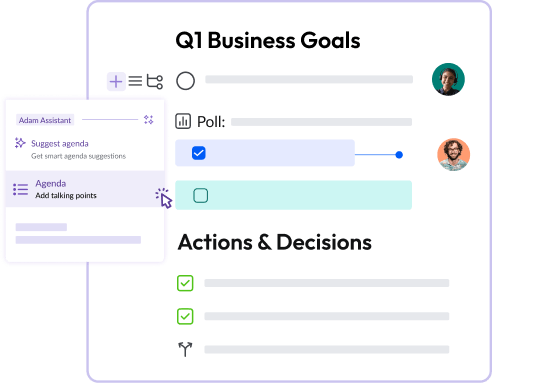
- Real-time collaboration
Tools for live document sharing and updates enable seamless knowledge exchange, bridging the gap between academic research and industry applications.
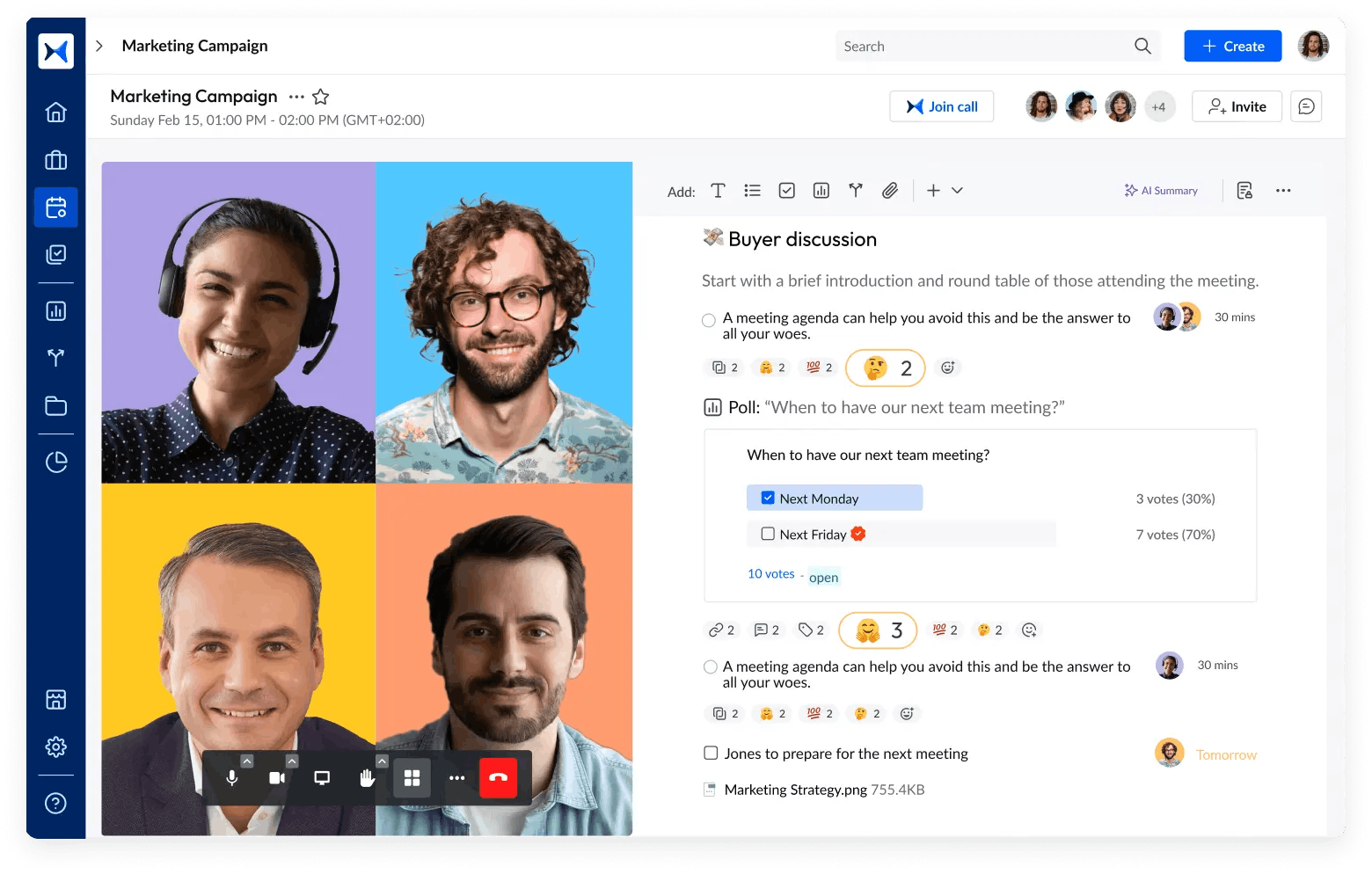
- Action tracking
Assigning and monitoring tasks ensures accountability for decisions made during meetings, driving progress toward partnership objectives.
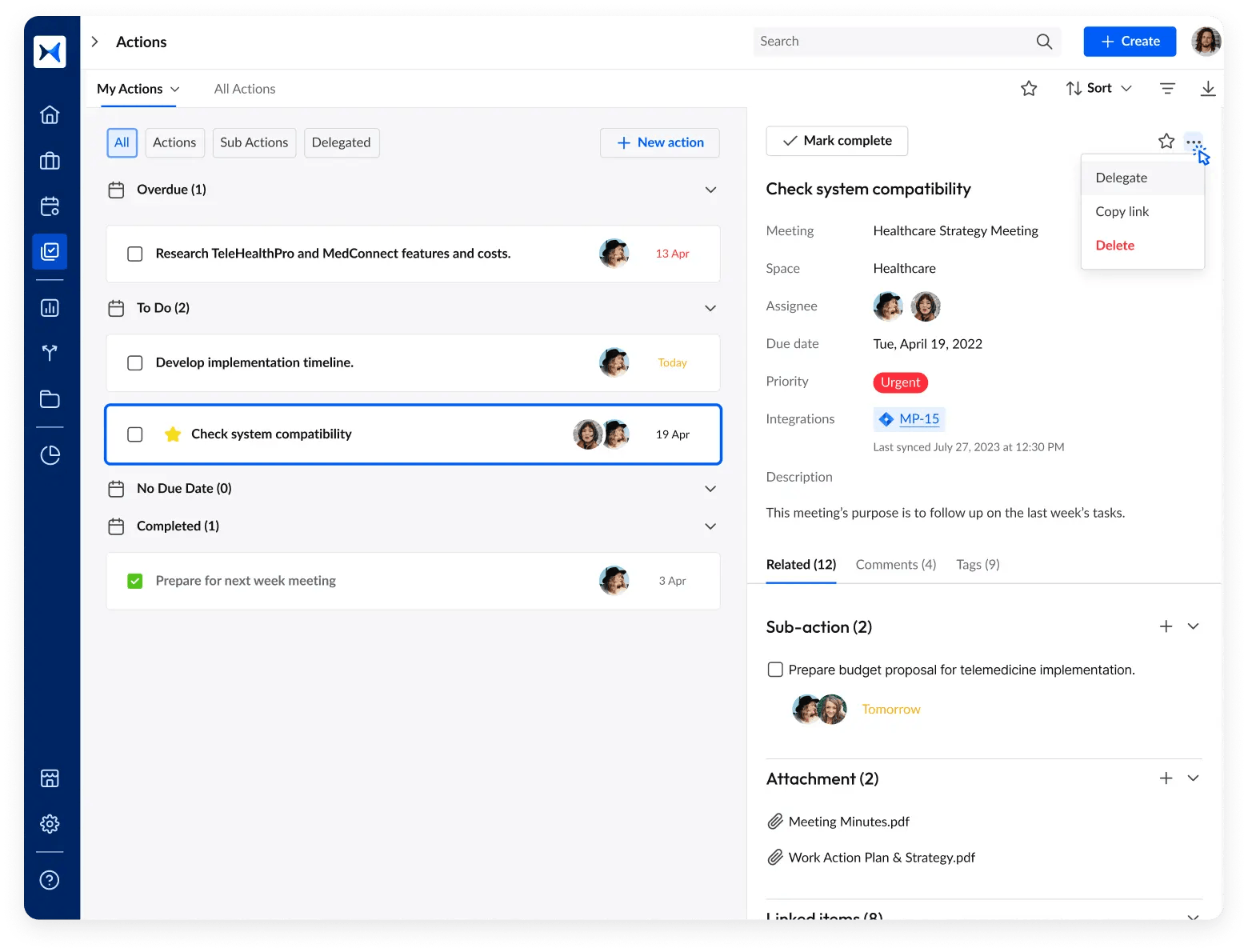
- Polling for decisions
Integrated polling facilitates quick consensus on key issues, enabling transparent and inclusive decision-making.
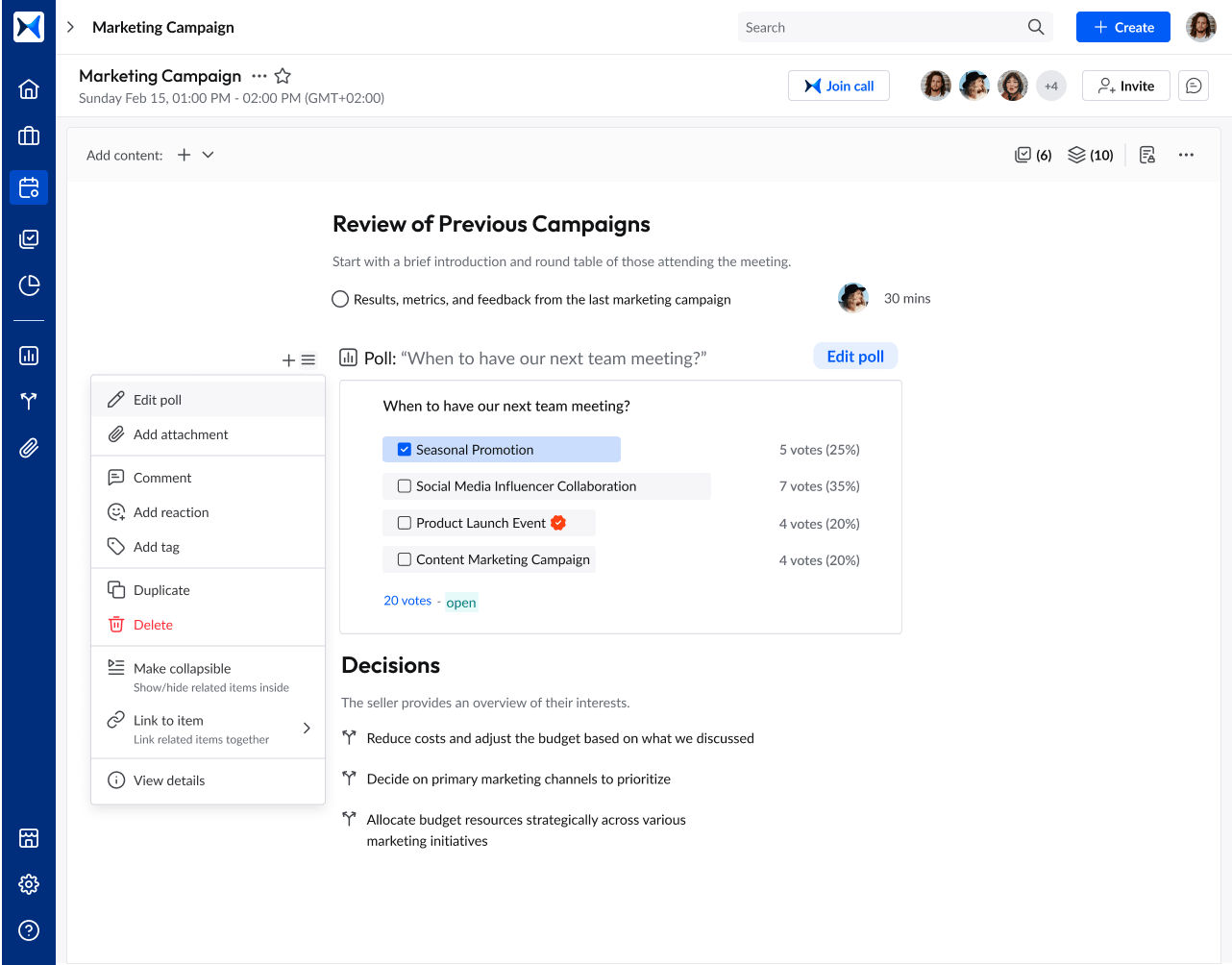
- Meeting minutes
Automatically generated minutes capture discussions and decisions, creating a reliable record that supports continuity and clarity in long-term collaborations.
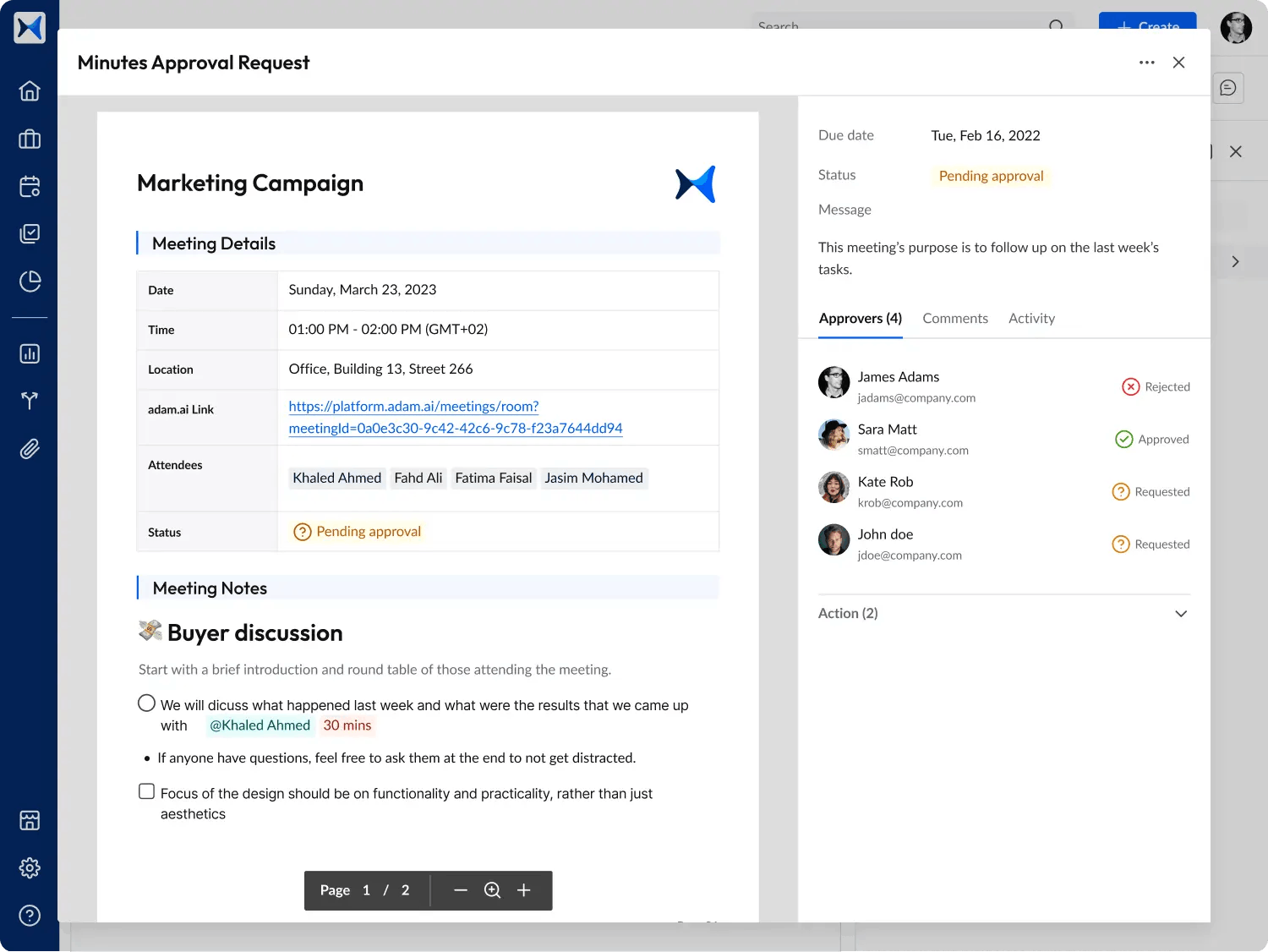
- Analytical dashboards
Insightful analytics track meeting outcomes and engagement, helping stakeholders refine strategies and measure the partnership’s impact.
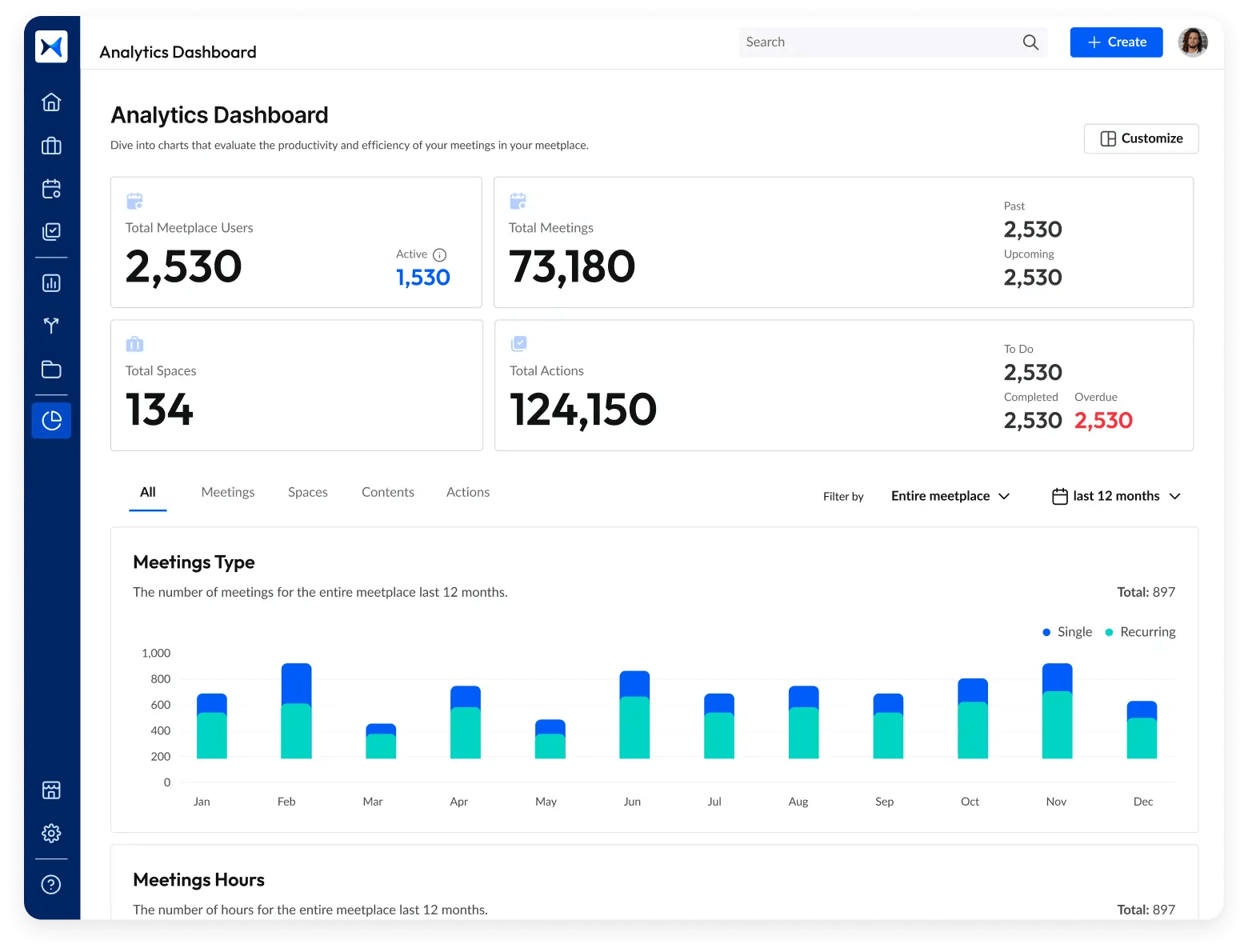
Transform how you conduct critical meetings—From meticulous preparation to effective execution and insightful follow-up, adam.ai integrates comprehensive analytics, full customization, and intuitive interfaces with powerful meeting management tools.
Easy onboarding. Enterprise-grade security. 24/7 dedicated support.
The bottom line
Sustainable university-industry partnerships hinge on structured communication and shared goals. Leveraging modern tools like centralized meeting platforms ensures these partnerships remain productive, innovative, and impactful.
And while there may be multiple solutions available, here is why adam.ai is the meeting management software platform you can trust:
- adam.ai is one of Atlassian Ventures' portfolio companies.
- In the meeting management software category on G2, adam.ai has been ranked a leader and a high performer for successive quarters in the past years.
- adam.ai has been included in the Forrester Report in the AI-enabled meeting technology landscape.
- adam.ai is trusted and used by powerful teams and organizations worldwide for all types of critical meetings, like board, committee, project management, and business development meetings.
- And most importantly, adam.ai integrates with your existing workflow, is SOC2 compliant, provides dedicated support and success, and has a free trial option.
Subscribe to adam.ai blog
Stay ahead with the latest insights—get our newest blog posts, tips, and updates sent straight to your inbox.